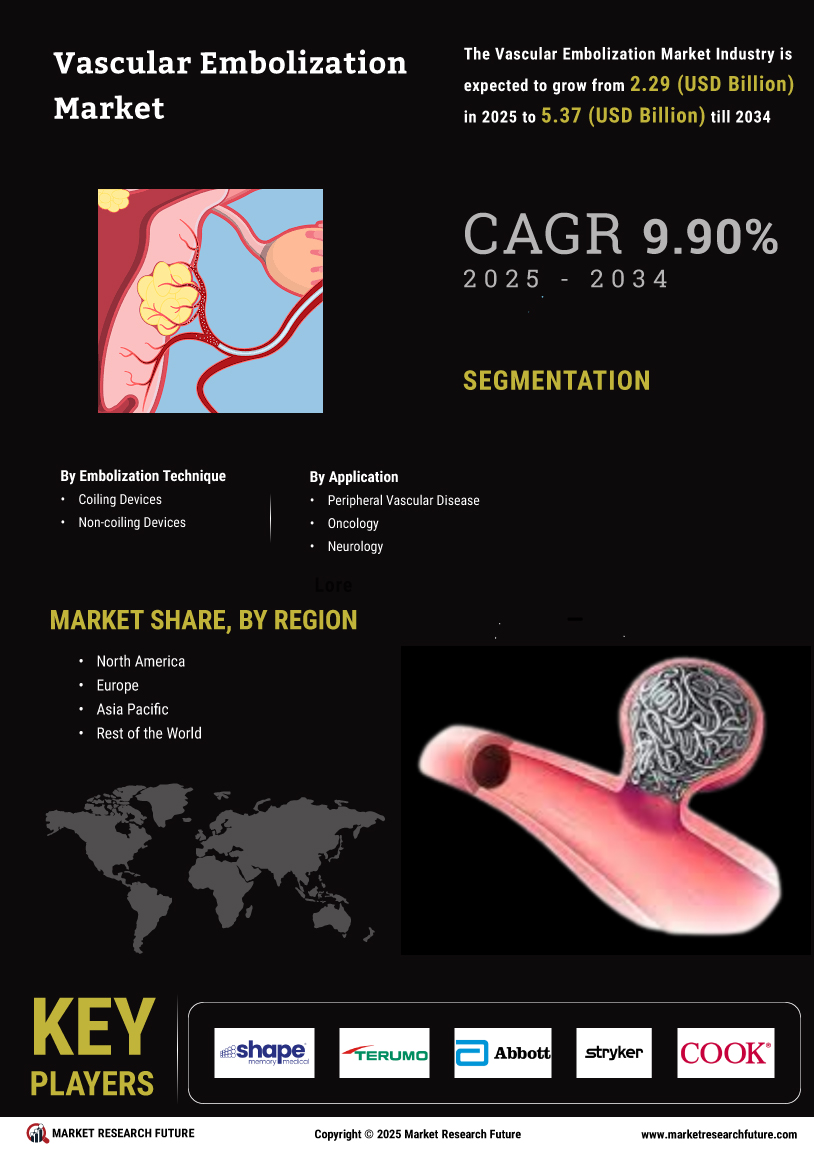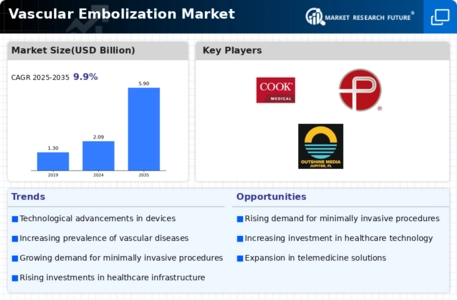Increasing Prevalence of Vascular Disorders
The rising incidence of vascular disorders, such as arteriovenous malformations and uterine fibroids, is a significant driver for the Vascular Embolization Market. As populations age and lifestyle-related health issues become more common, the demand for effective treatment options is escalating. Recent statistics indicate that vascular diseases affect millions worldwide, leading to a heightened need for minimally invasive interventions. The Vascular Embolization Market is poised to benefit from this trend, as embolization procedures offer a less invasive alternative to traditional surgical methods. This shift not only improves patient recovery times but also reduces healthcare costs, further propelling market growth. The increasing awareness of vascular health and the importance of early intervention is likely to sustain this upward trajectory in the coming years.
Regulatory Support and Reimbursement Policies
Regulatory support and favorable reimbursement policies are pivotal factors influencing the Vascular Embolization Market. Governments and health authorities are increasingly recognizing the importance of embolization procedures in treating vascular conditions, leading to the establishment of supportive regulatory frameworks. Additionally, many insurance providers are expanding coverage for these minimally invasive treatments, which enhances patient access and encourages healthcare providers to adopt these techniques. The alignment of regulatory policies with clinical guidelines is likely to foster innovation and investment in the Vascular Embolization Market. As reimbursement models evolve to favor cost-effective and efficient treatments, the market is expected to experience sustained growth, driven by increased adoption of embolization procedures.
Rising Investment in Healthcare Infrastructure
Investment in healthcare infrastructure is a crucial driver for the Vascular Embolization Market. Governments and private entities are increasingly allocating resources to enhance medical facilities and expand access to advanced treatment options. This trend is particularly evident in emerging economies, where the establishment of specialized vascular centers is on the rise. Enhanced infrastructure not only facilitates the adoption of cutting-edge embolization technologies but also improves patient access to these services. As healthcare systems evolve, the Vascular Embolization Market is likely to benefit from increased patient volumes and a broader range of treatment offerings. The ongoing commitment to healthcare improvement suggests a promising outlook for the industry, with potential growth opportunities in various regions.
Technological Innovations in Vascular Embolization
The Vascular Embolization Market is experiencing a surge in technological innovations that enhance the efficacy and safety of procedures. Advanced imaging techniques, such as 3D angiography and real-time ultrasound, are becoming increasingly prevalent, allowing for more precise targeting of embolization agents. Furthermore, the development of novel embolic materials, including bioresorbable microspheres and liquid embolics, is expanding treatment options for clinicians. According to recent data, the market for embolization devices is projected to grow at a compound annual growth rate of approximately 6.5% over the next several years. This growth is indicative of the industry's response to the demand for improved patient outcomes and reduced procedural risks, thereby driving the overall expansion of the Vascular Embolization Market.
Growing Preference for Minimally Invasive Techniques
The Vascular Embolization Market is witnessing a marked shift towards minimally invasive techniques, which are favored by both patients and healthcare providers. These procedures typically result in shorter hospital stays, reduced pain, and quicker recovery times compared to conventional surgical approaches. As patients increasingly seek out options that minimize disruption to their daily lives, the demand for embolization procedures is expected to rise. Market analysis suggests that the minimally invasive segment is likely to capture a larger share of the overall vascular intervention market, with projections indicating a growth rate of around 7% annually. This trend reflects a broader movement within the healthcare sector towards patient-centered care, which is anticipated to further bolster the Vascular Embolization Market.













